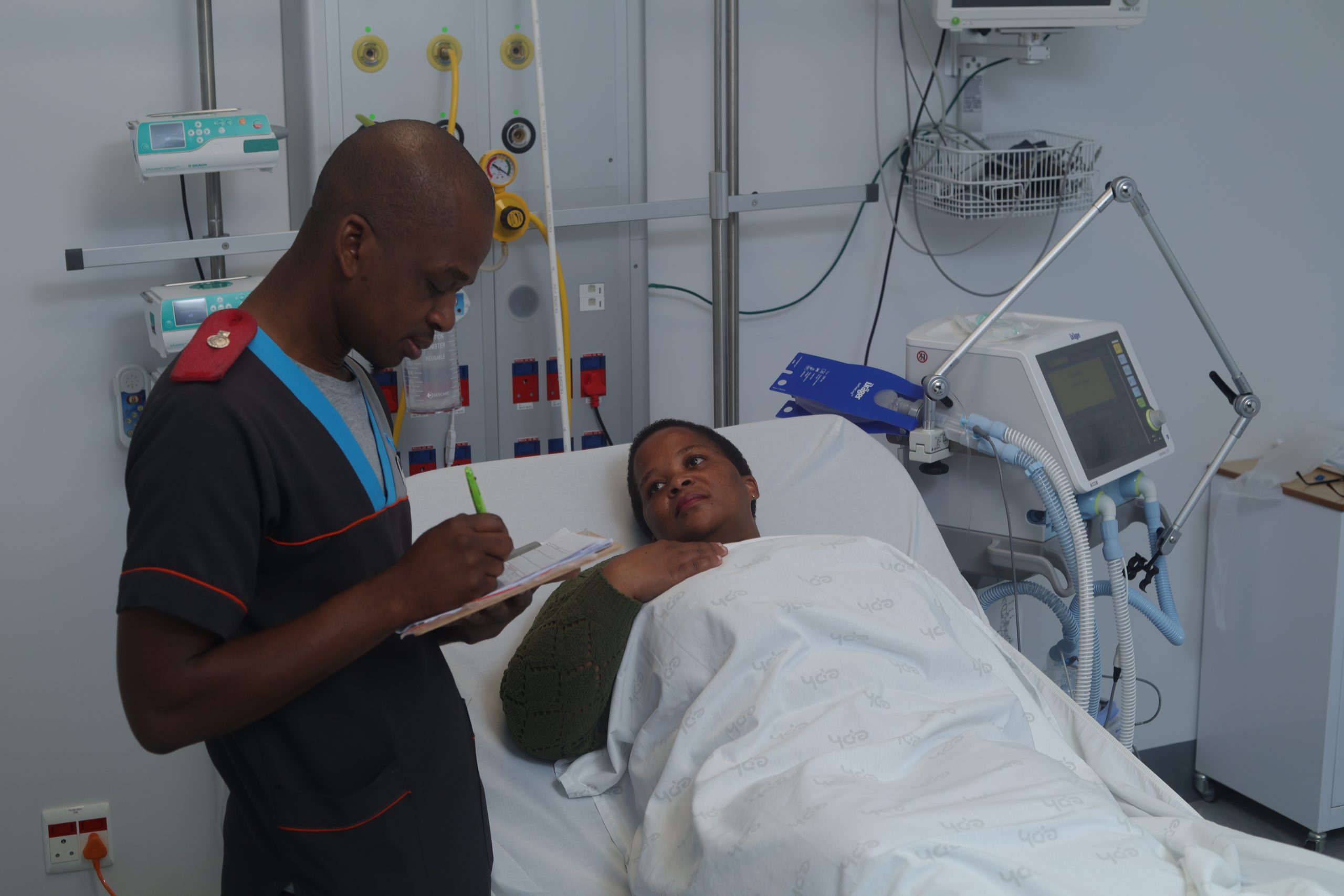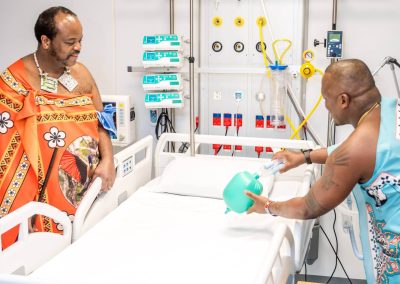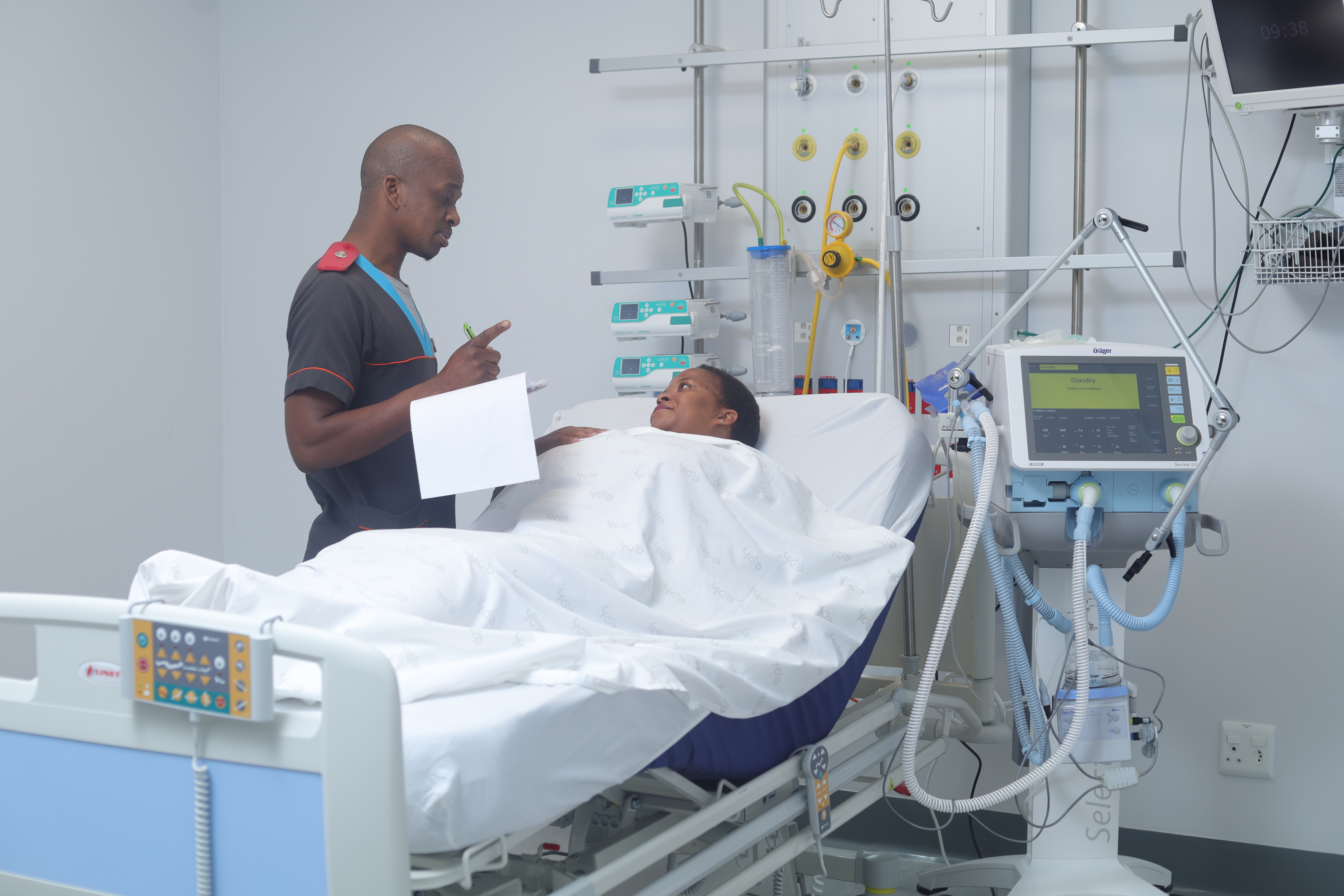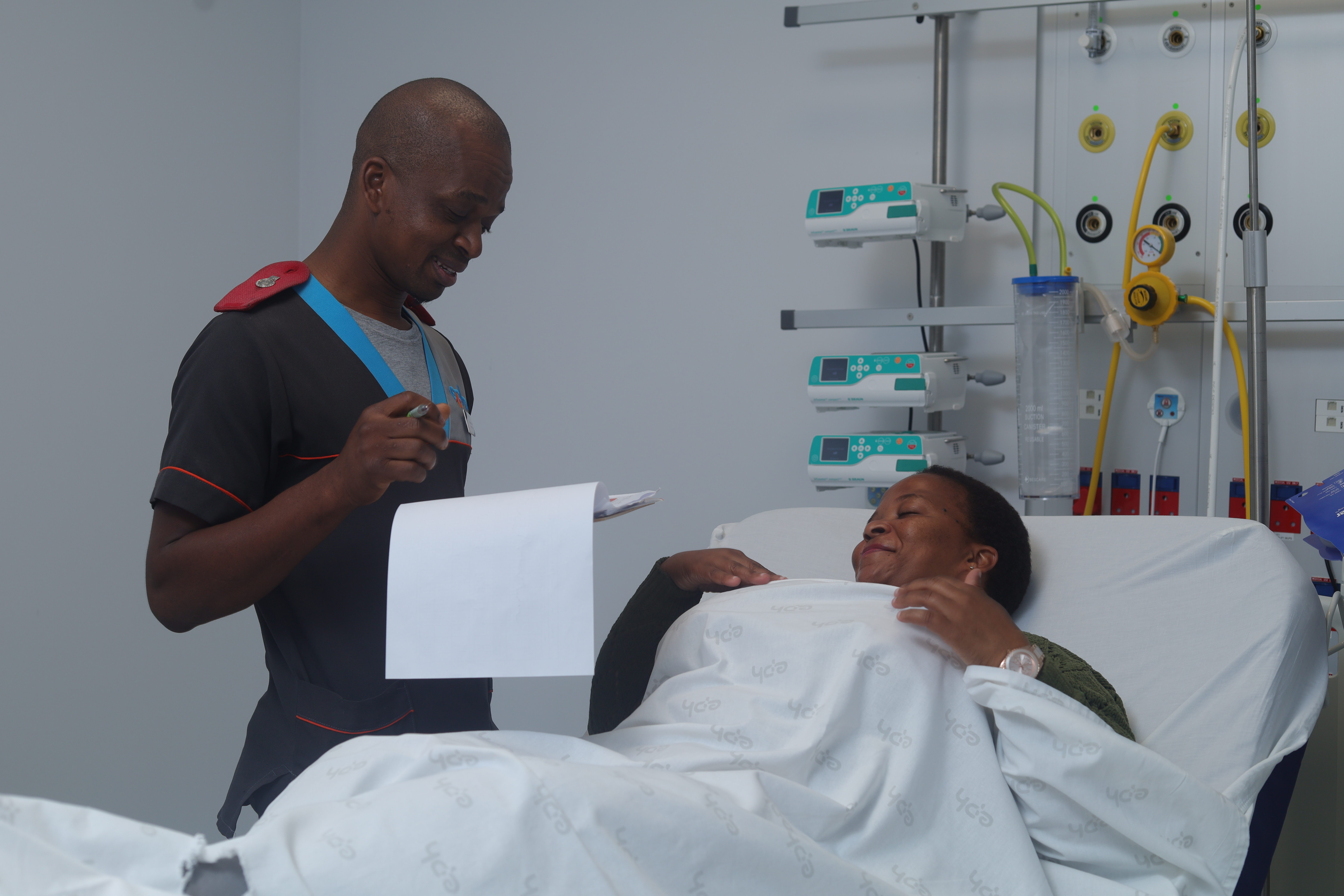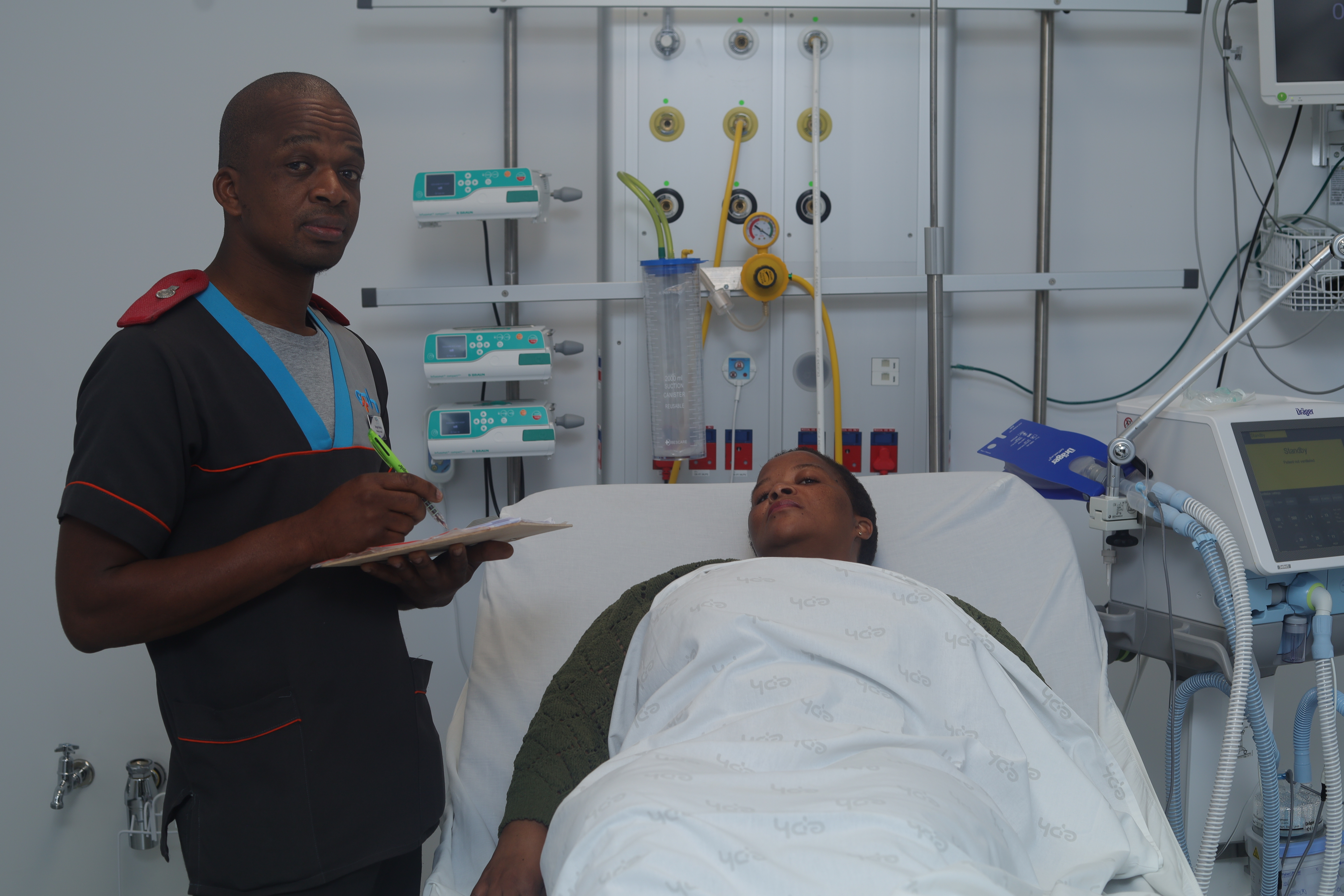24HR EMERGENCY UNIT/CASUALTY
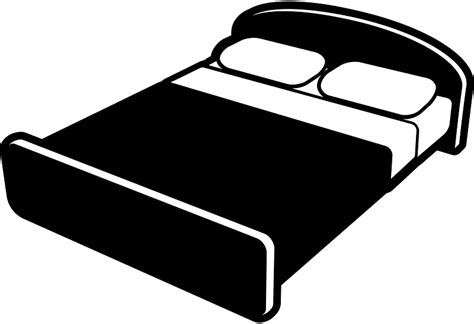
CONSISTS OF TWO RESUSITATION BAYS
This is where patients with critical conditions are being managed. Equipment available in this area is: defibrillators, portable ventilator, advanced airway management devices, monitoring equipment as well as the ability to do portable x-ray investigations.
POINT OF CARE LAB EQUIPMENT
In the Casualty Department, doctors need quick results to make fast decisions. Point-of-care (POC) lab equipment allows them to test blood right there, helping doctors to initiate the correct treatment options.
PROCEDURE ROOM
Used in procedures like suturing of lacerations, cleaning of wounds and applying of plaster of Paris for any fracture stabilization.
DECONTAMINATION SHOWER
This shower is located at the Ambulance entrance of the Casualty Department and is used for patients that is exposed to any chemical spillage that require decontamination (washing off the chemical on the body) before being treated by the medical personnel.
STAFF SKILLS & EXPERIENCES
All the medical practitioners working in the Casualty Department has been certified competent in advanced patient management training: ACLS (Advanced Cardiac Life Support) and PALS (Paediatric Advanced Life Support) and are therefore ready to manage any life-threatening conditions successfully. The nursing staff assigned to work in the Casualty Department are also ACLS certified and will soon complete their PALS training too.
The patient journey through the Casualty Department:
When the patient arrives in the Casualty Department they first go through triage. Here, nurses quickly assess their condition to decide how urgently they need to be seen. The triage nurse uses several important tools to determine the condition of the patient:
– Blood Pressure Monitor: Measures the force of blood against artery walls.
– Pulse Oximeter: Clips to the finger to measure blood oxygen levels.
– Thermometer: Checks for fever, indicating infection or other issues.
– History of illness as well as any medical treatment the patient is on.
The patient will then be assigned to the Medial Practitioner for further examination and treatment.

